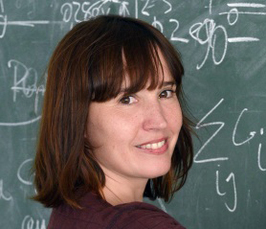Topological materials for future technologies
Max Planck Quantum Matter Seminar
- Date: May 25, 2022
- Time: 03:00 PM - 04:00 PM (Local Time Germany)
- Speaker: Maia G. Vergniory
- Max Planck Institute for the Chemical Physics of Solids, Dresden, Germany
- Location: CFEL (Bldg. 99)
- Room: Seminar Room I-III (EG.076-080) and on Zoom
- Host: Umberto de Giovannini

Quantum materials are a collection of atoms with interacting electrons and nuclei displaying emergent behaviour and topological properties—properties robust to local defects. The past two decades has witnessed an explosion in the field of topological materials: from weak interacting electrons to strongly correlated ones, topological materials represent one of the most exciting application for future technologies. High performance electronics, quantum information or ultrafast spintronics are just a few of the possible technologies that can be developed based on these materials. In this talk I will discuss the route to go from pure mathematical prediction of topological properties, through high through-put materials search to device fabrication. I will discuss both topological insulators, in non-magnetic and magnetic phases as well as topological (chiral) semimetals using the modern theory of topological band structure — Topological Quantum Chemistry — built upon symmetry-based considerations and complemented with chemical theories of bonding, ionization, and covalence. Consequently, it describes the universal global properties of all possible band structures and materials. Beyond the single particle picture, I will present our formalism based on Green’s functions aiming to discover topological correlated phases in materials displaying electronic entanglement, such as topological Kondo insulators or Mott phases. I will finish my talk by discussing some directions for non-equilibrium materials, in particular laser pumped materials with an emphasis on using selective excitation of phonon modes to control magnetic properties and induce topological changes in electronic band structure or phonon-induced charge density waves.